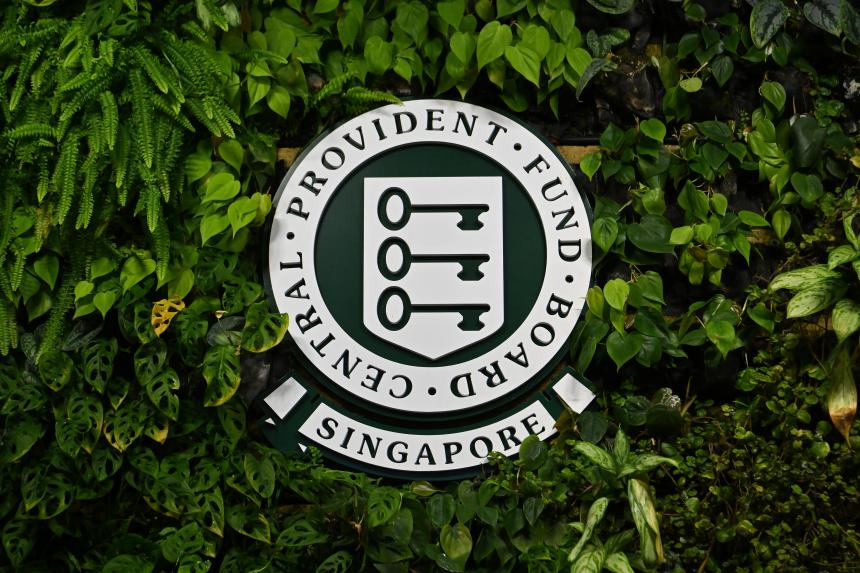News analysis
CPF members to get boost from quarterly reviews amid high interest rate environment

SINGAPORE – A move to review interest rates on the Central Provident Fund (CPF)
Retirement Account (RA) every quarter from once a year will ensure that the rates are
more responsive to the prevailing interest rate environment.
With interest rates turning more volatile, CPF members get to enjoy higher rates
sooner if they are reviewed on a quarterly basis, instead of having to
wait until the following year.
Associate Professor Chia Ngee Choon from the Department of Economics at the
National University of Singapore, said the CPF Board is the trustee of CPF savings.
“Its function is to protect and preserve the value of the CPF savings,” she said.
“Given the volatility in the financial markets and if the Board seeks to provide fair
market returns to its members, a quarterly review is a move in the right direction.”
This comes after the Government on Dec 6 announced a jump of 0.08 percentage point to 4.08 per cent for the RA, the first time the rate has risen since 2008.
It said then that the RA rate will be aligned with that of the Special Account (SA)
and MediSave Account (MA) from 2024.
The rates on all three accounts will rise to 4.08 per cent for the period of January to March 2024.
Meanwhile, the floor rate will stay at 4 per cent until the end of December 2024,
meaning that if RA, SA and MA rates fall below 4 per cent, it will pay CPF
members the minimum interest rate of 4 per cent.
The move follows the increase in yields on 10-year Singapore Government Securities (SGS),
which have jumped from 2.34 per cent in March 2022 to as high as 3.48 per cent in
September 2022.
The benchmark 10-year yield is currently yielding about 2.92 per cent in the markets.
Bond yields in Singapore had followed yields in the United States higher.
Interest rates in the US are at a 22-year high of between 5.25 per cent
and 5.5 per cent
after the US Federal Reserve started raising rates from zero to fight inflation
in March 2022. The US 10-year Treasury went close to 5 per cent in October and
is now hovering around 4.23 per cent.
The rising yields had already contributed to the CPF interest rates for the SA and
MA going
up in the July to September period by 0.01 percentage point
to 4.01 per cent,
and again in
the October to December period by another 0.03 percentage point to 4.04 per cent.
All three rates – RA, SA and MA – will henceforth be pegged at 1
percentage point
above the average yield of the 10-year SGS over the past year.
Ms Evelyn Goh, deputy chief executive and chief advisory officer of Providend,
said since the
formula for the SA, MA and RA was introduced in 2008, CPF members
have only
been getting the floor rate of 4 per cent.
The formula computes the rates for the SA, MA and RA by taking the simple average of the
past 12 months of the 10-year SGS yields (the calculated rate) and adding
1 percentage point to the
calculated rate.
“We have never been able to activate this because of the interest rate environment. I
n this environment, where the 10-year SGS has gone up, now we are enjoying this 4.08 per
cent rate,” Ms Goh said.
But Professor Joseph Cherian, who was one of the experts appointed to the CPF advisory
panel in
2014 to revamp the system, said the 4.08 per cent nominal CPF rate still does not
cover headline inflation, which rose to 4.7 per cent in October from the same period a year ago.
“The real return on the CPF rates, which are all nominal – not inflation-indexed
– is temporarily negative,” he noted.
Still, he added that the CPF Board does give higher rates for the first $60,000 of combined CPF balances in the Ordinary, Special, Retirement and MediSave Accounts.
At these rates, the real CPF savings rate will be positive for those with smaller balances,
Prof Cherian said.
For example, those who are below 55 years old get 5.08 per cent interest on the first $60,000 of combined balances, capped at $20,000 for the Ordinary Account (OA).
For those who are 55 and above, the Government pays 6.08 per cent interest on the first
$30,000 of their combined balances (capped at $20,000 for OA), and
5.08 per cent on the next $30,000.
In the meantime, the CPF Board will have to fork out more with the rise in rates on the CPF
balances.
For instance, there is $107.61 billion in CPF members’ RAs, according to the latest third-quarter numbers from the CPF Board. An increase of 0.08 percentage point in the RA interest rate
translates to $86 million more that the board has to pay.
Providend’s Ms Goh said CPF invests members’ monies in special SGS, which are issued and guaranteed by the Government.
The Government pools the CPF monies with the rest of its funds, such as past
government surplus funds and proceeds from land sales, and GIC is tasked to
manage the monies for long-term returns.
“If we look at GIC’s latest report, the annualised US dollar nominal rate of
return is 6.9 per cent
over a 20-year period ended March 2023,” she said.
After taking into account global inflation, the real rate of return is 4.6 per cent, up 0.4 per cent
from the previous year.
With GIC still able to make returns, Ms Goh said the Government should have no issue
paying for the extra interest.
Join ST's Telegram channel and get the latest breaking news delivered to you.











No comments:
Post a Comment